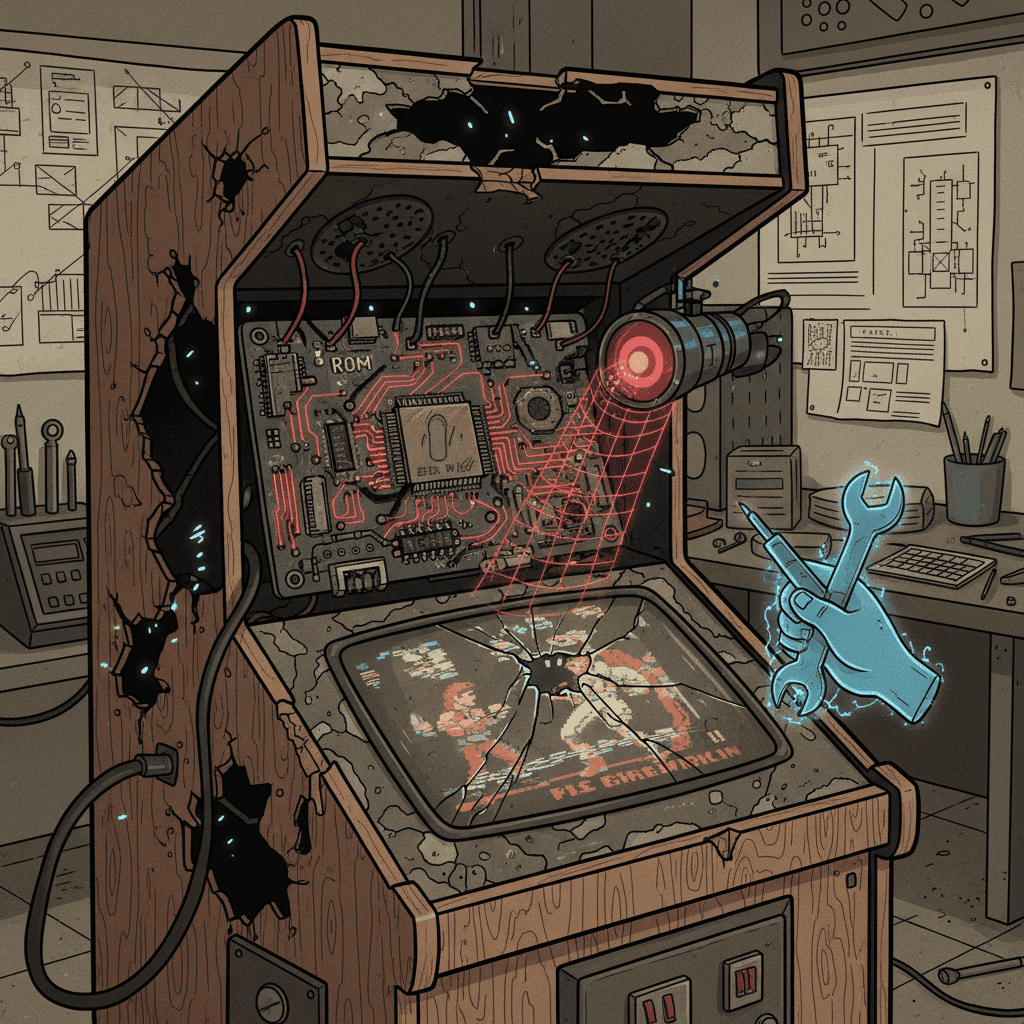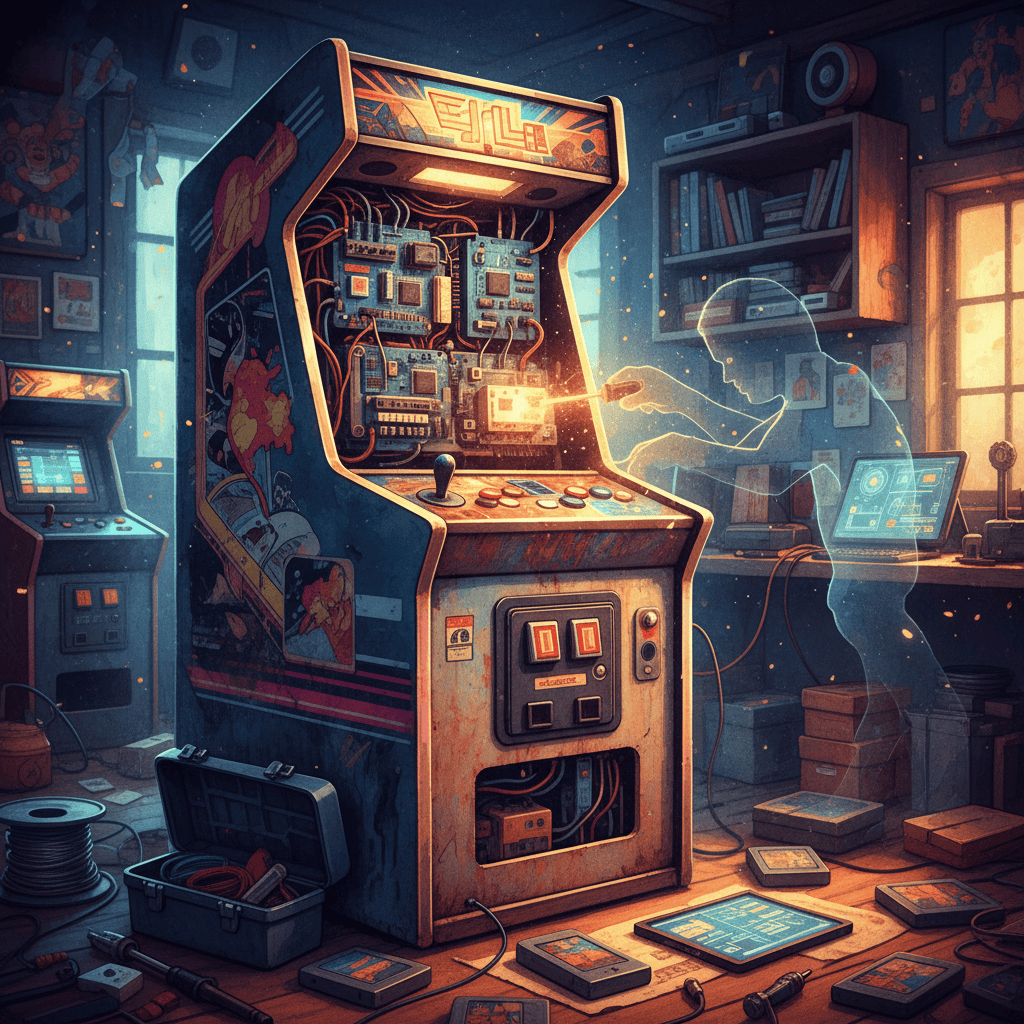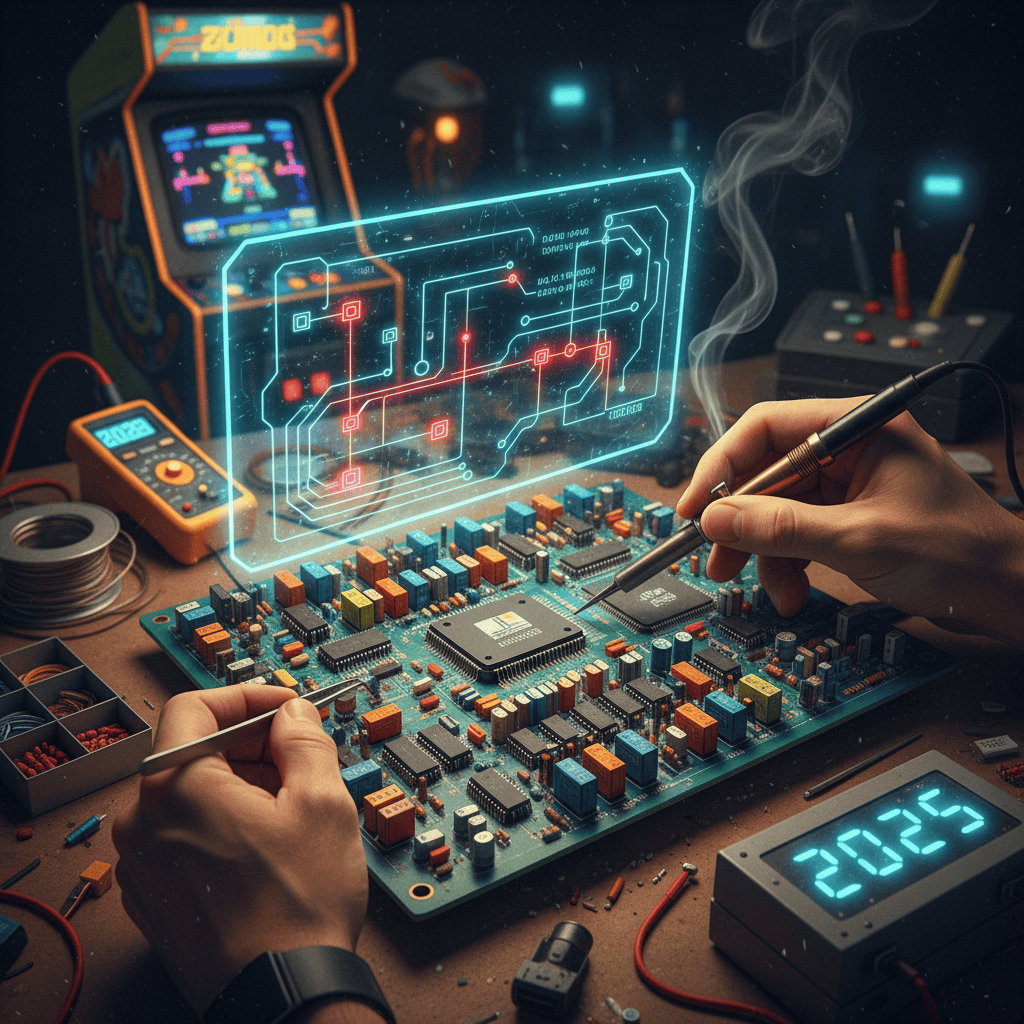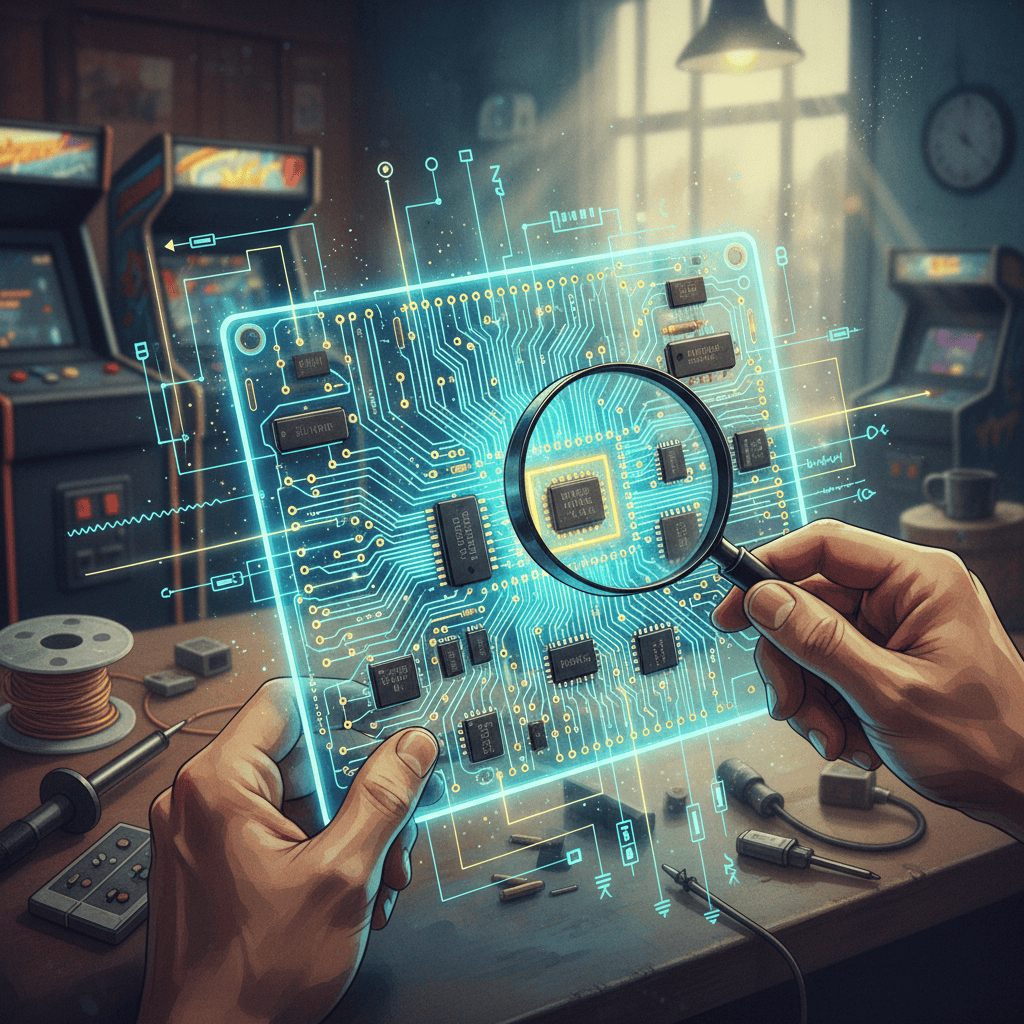Let’s be honest, you’ve got a beautiful, dusty beast sitting in your garage – a time capsule of 80s and 90s gaming glory. Your 2025 arcade cabinet. Getting it back into fighting shape isn’t just about nostalgia; it’s about reclaiming a piece of gaming history. This isn’t your grandpa’s woodworking project; this is a mission for a true gamer.
Assessing the Damage: From Cracked Chassis to Corrupted ROMs
The first time I tackled a cabinet restoration, back in ’98, I was totally overwhelmed. But you’re not alone; I’m here to guide you through it. Before you even think about a screwdriver, take a thorough inventory. What are we dealing with here? Scratched paint? A joystick with the responsiveness of a sloth? Is your precious Ms. Pac-Man ROM corrupted? We need to document everything.

This phase includes:
- Visual Inspection: Carefully examine the cabinet for scratches, dents, cracks, and missing parts. Take photos of everything; you’ll thank me later.
- Electronics Check: Power it on (carefully!). Does the monitor work? Are the buttons and joystick responsive? Does the sound work? If not, don’t panic – we’ll troubleshoot.
- Software Audit: If you have a game board, boot it up. Is it loading correctly? If you have a multi-game system, do all the games work? You can also check the integrity of ROMs using verification tools.
Key Takeaway: Thorough documentation is key. Take detailed photos, make notes of any malfunctions, and save yourself headaches down the line.
The Parts Purge: Sourcing Components for Your Arcade Resurrection
This is where the detective work really begins. Finding replacement parts for older arcade cabinets can be a quest worthy of a fantasy RPG; utilizing resources dedicated to retro gaming repair is often crucial. There’s no single solution. I’ve scavenged parts from flea markets, haunted online auctions, and specialized arcade repair shops. Here are your primary sources:
- eBay and Craigslist: These are goldmines for used parts, but be wary of scams and damaged goods. Always check the seller’s reputation!
- Arcade Repair Shops: These are your ultimate source for high-quality parts, but often they’ll charge a premium.
- Online Retailers: Several sites specialize in arcade parts and accessories. Do your research to find a reliable one.
- Retro Gaming Conventions: These offer opportunities to connect with other enthusiasts and find rare parts. I remember finding a perfectly preserved joystick from a Donkey Kong Jr. cabinet at one of these!
The Restoration Process: From Sanding to Shining
Now for the hands-on part. This section is broken into stages.
Cabinet Restoration:
- Cleaning: Start by thoroughly cleaning the cabinet with a suitable cleaner. Remove any dust, dirt, and grime. For stubborn stains, I’ve had luck with a mild solution of soap and water.
- Repairing Damage: Minor scratches can be fixed with touch-up paint. Larger dents or cracks may require more extensive repairs, potentially involving wood filler and sanding. A common mistake I see new players make is rushing this step; it needs patience!
- Repainting (Optional): If you’re going for a full restoration, you’ll likely want to repaint the cabinet. Use high-quality automotive paint for durability.
- Artwork and Decals: Replacing faded or damaged artwork is crucial for bringing your cabinet back to its former glory. You can find reproduction decals online, or try commissioning custom artwork.
Electronics Restoration:
- Monitor Repair: Arcade monitors are notoriously fragile. If your monitor is faulty, you might need professional help. Burnt-out flyback transformers are the bane of many retro gamers.
- Joystick and Button Replacement: Worn-out joysticks and buttons can make a cabinet unplayable. Replacing these components is usually straightforward. My go-to is Happ joysticks; they’re reliable and readily available.
- Power Supply Check: Check the power supply for any signs of damage or wear. If necessary, replace it with a new one. Remember always disconnect the power supply before making any changes.
- Board Repair (Advanced): Working with the game board requires technical skill and a good understanding of electronics; if you’re not comfortable, consider professional help to repair your PCB.
The Final Polish: Software, Calibration, and the First Game
Once the hardware is fixed, it’s time to focus on the software and calibration. It’s all about precision here. Getting things just right can involve lots of small tweaks.
- ROM Verification and Loading: Ensure your ROMs are correctly loaded and function flawlessly. Checksum tools can help verify integrity.
- Calibration: Adjust the joystick and buttons for optimal sensitivity. Many arcade games, like Mortal Kombat, are extremely precise and rely on perfect inputs.
- Testing: Play through each game thoroughly to identify any remaining issues.
Key Takeaway: The final polish is where the magic happens. Take your time to calibrate everything perfectly. The difference between a clunky and perfect experience can be subtle, but it’s vital.
What’s Next: Game On!
You’ve done it. You’ve breathed new life into your arcade cabinet. It is not just about gaming; it’s a testament to your patience, skill, and a deep love for retro gaming. Now, choose your game, summon your friends, and get ready for a session of exhilarating arcade action. Remember to share your restored masterpiece on social media! Use #arcadeRestoration #RetroGaming #GamingHistory. The arcade community is hungry for your achievement!

Frequently Asked Arcade Restoration Questions
Q: Where can I find schematics for my arcade cabinet?
A: You might find them online through dedicated arcade forums or websites specializing in repair manuals. Check online forums for specific cabinet model numbers.
Q: What type of paint is best for repainting an arcade cabinet?
A: Automotive paints are recommended for durability and a professional finish. Enamel-based paints work well for this purpose.
Q: How do I know if my monitor needs professional repair?
A: If the image is distorted, blurry, or has a noticeable flicker, or if there is any physical damage to the CRT, you’ll likely need professional help.
Q: What are the common issues with arcade joysticks?
A: Worn-out microswitches, loose connections, and sticky mechanisms are common problems. A complete joystick replacement often resolves this.
Q: My game ROM is corrupted; can I fix it?
A: If the ROM is only slightly damaged, using ROM repair tools may be possible. However, extensive damage usually means you’ll need a replacement ROM.
Q: How can I protect my restored cabinet?
A: Consider using a UV-resistant sealant to help preserve your cabinet and its paint job. Keep it in a climate-controlled environment to prevent damage from moisture or temperature fluctuations.
Q: Can I convert my cabinet to use modern hardware?
A: Yes, many enthusiasts convert their cabinets to use Raspberry Pi or other systems for increased versatility and modern game play, though it requires advanced technical skills.
Reviving Your Retro Dream: A Guide to Arcade Cabinet Restoration



